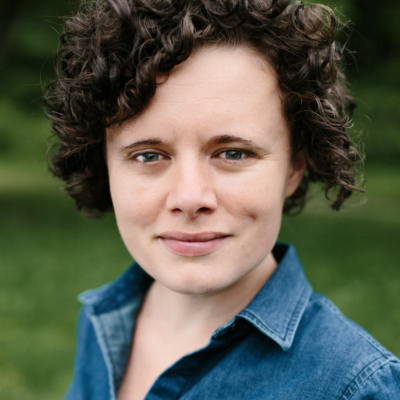All it took was for Hunter Craig to come out of the woodwork to represent the development in which he’s a principal investor.
Well, that and $30.9 million dollars in proffers. Plus.
 The largest proposed residential development in county history, the 3,100-unit Biscuit Run, came one step closer to reality, gaining a recommendation of approval from the Planning Commission at their May 29 meeting. The Board of Supervisors still need to sign off on the project. |
Biscuit Run developers significantly raised their offer to sweeten the deal on the largest residential development in county history. Among the particulars: $2.5 million more in cash for transportation, including concessions to the city’s priorities; $1 million for transit, plus the promise of some transit in perpetuity; $875,000 for fire and rescue; “green” design standards for 10 percent of housing units; a three-acre championship field. And then the “crown jewel,” in the words of Planning Commissioner Eric Strucko: a 402-acre park in the rural area, up from 92 acres in the original proposal.
 Steven Blaine (pictured) stepped aside at the beginning of Biscuit Run’s second public hearing to make way for Hunter Craig, a principal investor in the project. Craig apologized for not asking for a deferral at the original public hearing: “It was a gross mistake, but sometimes good things come out of mistakes.” |
 Marcia Joseph, Planning Commission chair, had high praise for Biscuit Run’s latest offer: “This is going to be a legacy.” In April, the Commission unanimously rejected the rezoning request; this time, they unanimously approved the project. The difference? Millions of dollars and 310 acres of parkland. |
During the May 29 meeting, the Commission also extracted a big commitment from the developers, who agreed to an escalator clause that would tie the value of the proffers to an inflationary index. As it may take 20 to 30 years for Biscuit Run to build-out, county officials thought the clause necessary. (“Oh, it’s a lot of money,” said Biscuit Run representative Steven Blaine after the meeting.)
It was enough to satisfy the sweet tooth of the Planning Commission this time. “The economics seem a little on the thin side for you, and I for one thank you for that,” said Commissioner Duane Zobrist before motioning to recommend approval to the Board of Supervisors. “They’ve raised the bar for just about every other developer in this community,” said Commission Chair Marcia Joseph. After the unanimous vote of approval was cast, she added: “It’s been painful sometimes, but I think we’ve finally got something we’re all proud of. This is going to be a legacy.”
The Commission was so giddy they forgot to vote on two related waivers, and had to reconvene briefly to give their consent.
The tone of “thank you”s and back-pats was in contrast to previous Biscuit Run meetings, where imprecations and sucker-punches would have been more likely. Craig helped set that tone: “I’m here to apologize to you because I think we made a mistake, it was my mistake two months ago when we did not ask for a deferral. That was solely my mistake. It was a gross mistake, but sometimes good things come out of mistakes.”
It was the first time at a public meeting he’s acknowledged his role in the project, but after the meeting, Craig would not speak to the media (Susan Payne, whose firm, Payne Ross & Associates, is handling PR for Biscuit Run, shepherded this reporter to Blaine instead. “He’s shy,” she said of Craig).
Over 30 members of the public spoke, roughly dividing into those getting something out of the deal and those who felt they were getting a raw deal. Residents of the Oak Hill neighborhood, directly north of the tip of the project, spoke in favor of the project—thanks in large part to the developers’ decision to give them a forest for a backyard instead of houses, as was in the original plan. Several reps from Habitat for Humanity also spoke out for the project—they’re getting $1 million for their redevelopment of the adjoining Southwood trailer park.
Members of the Fry’s Spring neighborhood in the city, however, promised to work to cut off Old Lynchburg and Harris roads if traffic increased a certain amount. Some Mill Creek South residents were particularly concerned about the traffic if a future connection is made between their neighborhood and Biscuit Run.
But the real surprise during the public comment was an uncharacteristically equivocal statement from Jeff Werner of the Piedmont Environmental Council. Warning of a glut of 11,000 housing units already approved in the county, Werner went on to say, “However, it cannot be ignored that unlike most other proposals already approved, Biscuit Run represents an opportunity for innovative solutions to the impacts of new development.” It was not an endorsement per se, and Werner urged developers “to commit to raising the bar at Biscuit Run and ultimately getting it right,” but it was a far cry from statements earlier in the process.
After the meeting, Blaine said, “We’re pleased. I think it really shows we needed to come back with significant modifications to the plan.” As far as raising the bar for development proffers: “I think policy will become the Biscuit Run policy, perhaps.”
Perhaps—if the project is approved by the Board of Supervisors. They have a work session scheduled for July 11, with a public hearing slated for August 8.
For more information: Charlottesville Tomorrow has a video of the May 29 Albemarle County Planning Commission meeting.
C-VILLE welcomes news tips from readers. Send them to news@c-ville.com.





